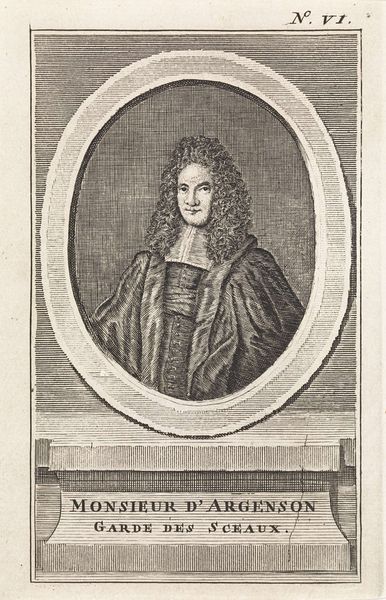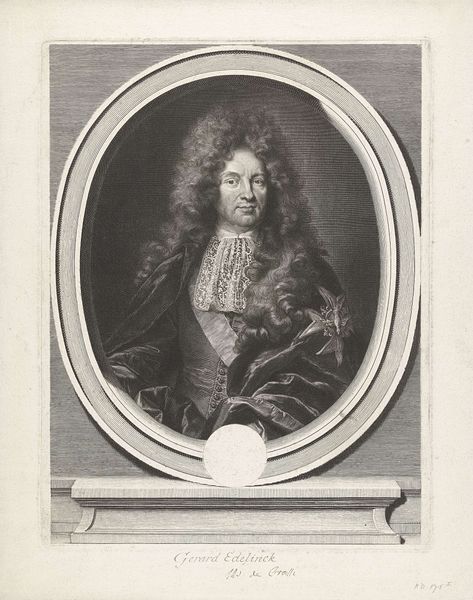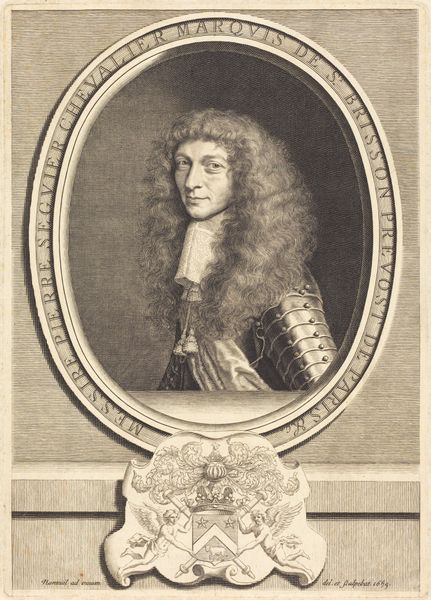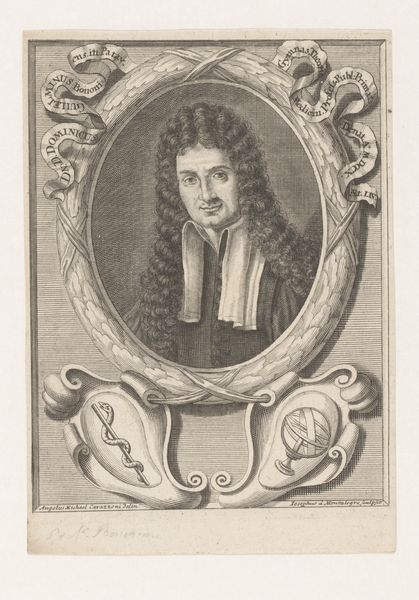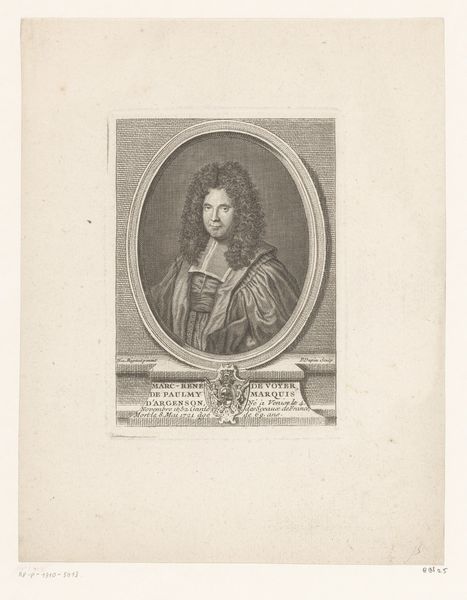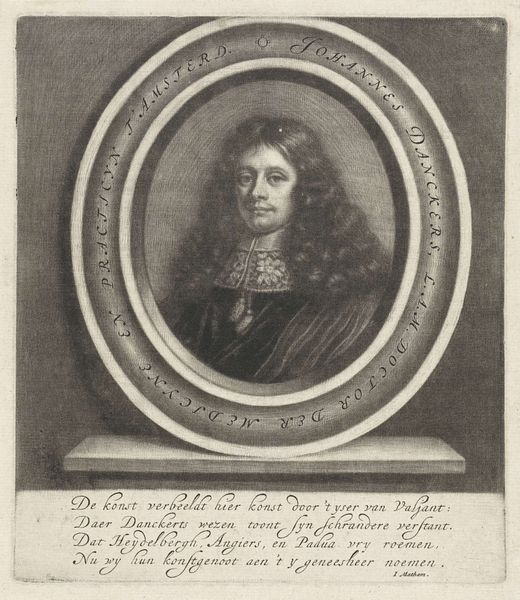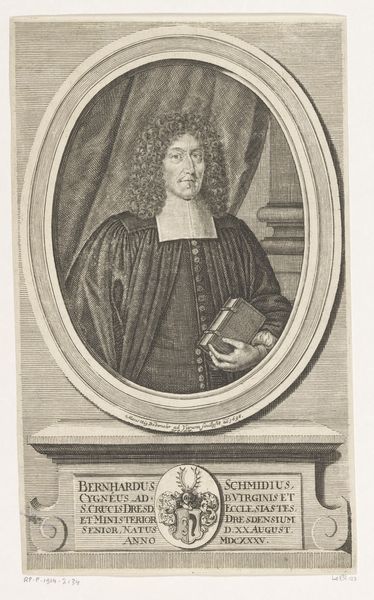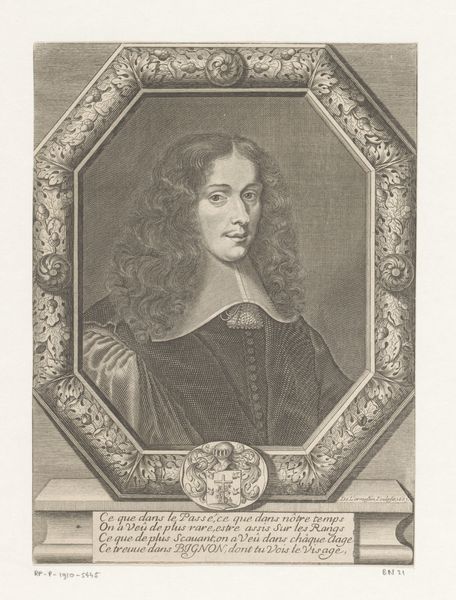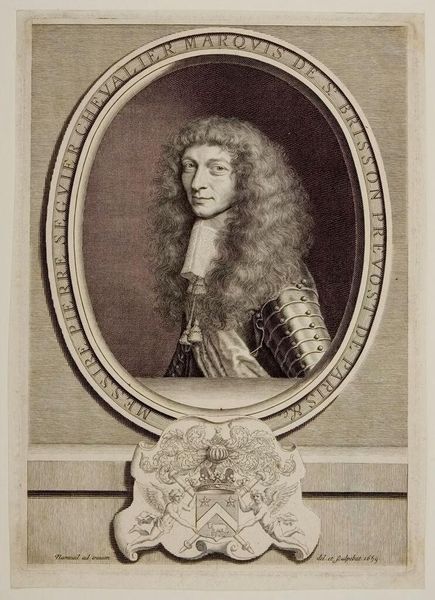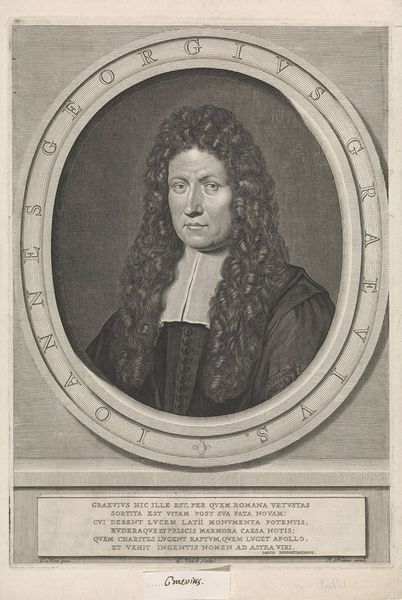
Portret van Marc-René de Voyer de Paulmy, markies d'Argenson 1696 - 1727
0:00
0:00
print, engraving
#
portrait
#
baroque
# print
#
old engraving style
#
old-timey
#
history-painting
#
engraving
Dimensions: height 155 mm, width 101 mm
Copyright: Rijks Museum: Open Domain
Curator: This engraving, currently housed in the Rijksmuseum, depicts Marc-René de Voyer de Paulmy, the Marquis d'Argenson. It’s dated between 1696 and 1727 and was produced by Matthijs Pool. Editor: It strikes me immediately as very austere. The sharp lines, the limited tonal range... almost clinical in its precision. The overall feeling leans toward formality. Curator: Well, as an engraving, the lines are fundamental to its construction. Consider the technical skill involved in achieving that level of detail. Think of the engraver's labor, meticulously carving the image into the metal plate, a process driven by patronage and the demands of a growing print market. Editor: Precisely, that's where the social context becomes fascinating. Portrait engravings like these served as crucial tools in shaping public perception and cementing the status of individuals like d’Argenson. This wasn't simply about aesthetic representation; it was about power and the distribution of imagery. Curator: And consider the materials involved: the paper itself, its sourcing and quality, the inks used to create these sharp, lasting impressions. Each decision in production impacts the final artifact. These engravings often circulated widely. How accessible would prints like these have been? What does its distribution tell us about the intended audience and the prevailing societal structures of the time? Editor: I agree. Understanding who had access to this image and where it was displayed provides insights into the social and political networks of the era. D'Argenson was part of Louis XIV's court, wasn't he? How might this portrait have functioned within that complex system of patronage and representation? Curator: Exactly. The context of the production matters just as much as the aesthetic choices. These portraits solidified social standing in a very material way. Editor: Reflecting on the engraving, I am reminded of the power images hold in perpetuating status, influencing how history remembers specific individuals, in this instance d'Argenson. Curator: Agreed, looking closely at material processes and context has sharpened my perception. I think these prints served as an interesting, reproducible social tool of its time.
Comments
No comments
Be the first to comment and join the conversation on the ultimate creative platform.
